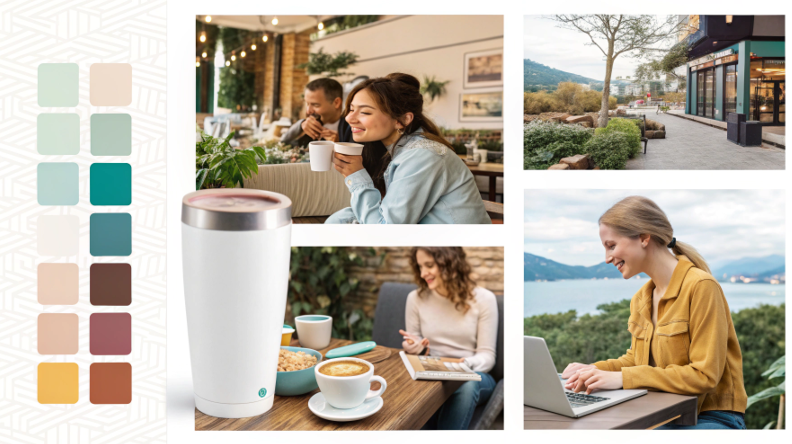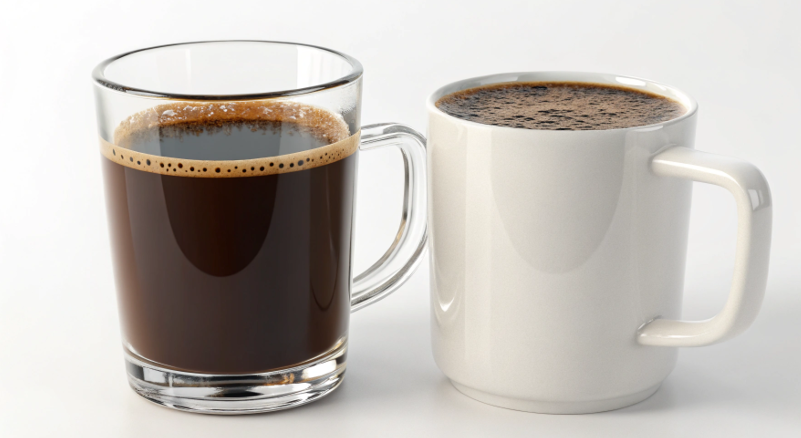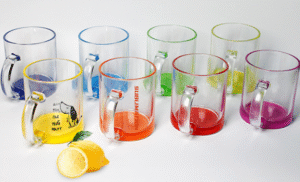Tired of your coffee going cold before you can enjoy it? You pick a mug, pour your brew, and minutes later it's disappointingly lukewarm. The wrong material is stealing your heat.
Generally, a ceramic mug will keep your coffee hot for longer than a glass mug. This is because ceramic is more porous and a better insulator than glass, slowing down the rate of heat loss from the coffee to the air.
As the founder of Vivimug, this is one of the most common questions I get from product developers like Emily. They want to create a great coffee experience, and temperature is a huge part of that. While the quick answer is "ceramic," the real answer is more interesting. It involves not just the material, but also the thickness, the shape, and even the lid. Let's dive into the details so you can make the best choice for your product line and give your customers that perfect, hot cup of coffee every time.
What type of mug holds heat the best?
You want to offer the best mug for keeping coffee hot. But choosing based on aesthetics alone often leads to a product that fails at its most basic job, resulting in unhappy customer reviews.
A thick-walled ceramic mug with a narrow opening and a lid holds heat best among traditional options. However, for maximum performance, a vacuum-insulated stainless steel tumbler will outperform any standard ceramic or glass mug by a wide margin.
!
When a product developer like Emily asks me this, I tell her to think about a mug as a system designed to fight heat loss. It's not just one thing, but a combination of factors. The material itself is a huge part. Ceramic's porous structure makes it a better insulator than glass. Think of it as having tiny air pockets that slow down heat transfer. Then there's thickness. A thicker wall on any mug, ceramic or glass, will provide more insulation and keep the coffee hot for longer. I once worked with a client whose chic, thin-walled ceramic mugs were getting complaints. We solved it by simply increasing the wall thickness by 2mm. Finally, the design matters. A tall, narrow mug has less surface area exposed to the cool air compared to a short, wide one, so it will lose heat more slowly. Adding a lid is the single best improvement you can make, as it dramatically cuts down on heat loss from evaporation and convection.
Mug Feature Impact on Heat Retention
| Feature | Why it Matters | Best for Heat Retention |
|---|---|---|
| Material | Governs how quickly heat moves through the mug's walls. | Vacuum-insulated steel, followed by ceramic, then glass. |
| Wall Thickness | Thicker walls create a greater barrier for heat to escape. | As thick as is practical for usability. |
| Mouth Opening | A larger surface area loses heat faster to the air. | A narrow opening. |
| Lid | Prevents heat loss from convection and evaporation. | A well-sealed lid. |
What material keeps drinks hot the longest?
Choosing the right material for your drinkware is confusing. Pick the wrong one, and your product could fail to deliver on the simple promise of keeping a drink warm, damaging your brand's credibility.
Vacuum-insulated stainless steel keeps drinks hot the longest by far. Among conventional, non-insulated materials, ceramic is slightly better than glass due to its lower thermal conductivity, which slows the transfer of heat.

To understand this, we have to look at a property called thermal conductivity. It’s just a scientific way of saying "how fast heat can travel through a material". A material with low thermal conductivity is a good insulator, and a material with high thermal conductivity is a poor insulator. Glass is made from melted sand and has a very uniform, non-porous structure. Heat travels through it relatively easily. Ceramic, on the other hand, starts as clay and is fired. This process creates a structure with countless microscopic air pockets. Since air is a poor conductor of heat, these tiny pockets act as insulation, slowing down heat transfer and giving ceramic a lower thermal conductivity than glass. This is why a ceramic mug feels less hot to the touch on the outside than a glass mug containing a liquid of the same temperature. Of course, the ultimate insulator isn't a solid material at all; it's a vacuum. That's why nothing on the market beats a double-wall, vacuum-insulated stainless steel tumbler.
Thermal Properties of Mug Materials
| Material | Thermal Conductivity (Lower is Better) | Key Characteristic |
|---|---|---|
| Vacuum | ~0 | The best theoretical insulator; stops conduction and convection. |
| Ceramic (Porcelain) | Low (approx. 1.5 W/mK) | Porous structure traps air, providing good insulation. |
| Glass | Moderate (approx. 1.1 W/mK) | Dense, uniform structure allows heat to pass through more easily. |
| Stainless Steel | High (approx. 16 W/mK) | A poor insulator on its own, relies on vacuum insulation. |
Which cup of coffee will stay hot the longest?
You need to design a cup that actually performs. But if you focus only on looks, you'll end up with a beautiful cup that lets coffee get cold fast, leading to poor customer satisfaction.
The cup of coffee that stays hot longest will be in a vacuum-insulated stainless steel tumbler with a sealed lid. For traditional mugs, a thick-walled, pre-heated ceramic mug with a narrow opening will win every time.

To answer this, you have to think about the three ways coffee loses heat: conduction, convection, and radiation. A product developer must design a cup that fights all three. First is conduction, which is heat escaping through the solid walls of the mug. A vacuum-insulated tumbler nearly eliminates this. A thick ceramic mug just slows it down. Second is convection. This is heat rising off the surface of the coffee and being carried away by the air. The best way to stop this is with a tight-fitting lid. A narrow opening also helps by reducing the surface area. The last one is radiation, where heat escapes as invisible infrared energy. Polished stainless steel on the inner wall of a tumbler is actually good at reflecting this heat back into the coffee. A simple but effective trick for any mug is to pre-heat it by rinsing it with hot water before pouring your coffee. This stops the mug itself from absorbing a large amount of heat from your brew right at the start.
What material has the best heat retention?
You need a clear answer for your product spec sheet. Any uncertainty can lead to supplier mistakes or a product that doesn't meet customer expectations for warmth, costing you money and reputation.
For absolute maximum performance, a vacuum between two walls of stainless steel provides the best heat retention. For a single-material product, ceramic has better heat retention than glass due to its more porous and less conductive nature.

As a product developer, your choice comes down to the intended use and market position of your product. There isn't a single "best" material, only the best one for a specific goal. If you are developing a travel mug or a high-performance thermos, the answer is clear: vacuum-insulated stainless steel. The performance is an order of magnitude better than anything else. But for a classic, at-home coffee mug, the choice is between ceramic and glass. Ceramic offers slightly better performance. Its classic feel and weight are what many customers expect from a mug. It also offers incredible versatility for decoration, from custom glazes to printed logos. Glass offers a clean, modern aesthetic and allows the user to see the beverage, which can be a key selling point for layered coffees or teas. It won't retain flavor, so the taste is pure. I advise clients like Emily that if the aesthetic of glass is crucial, they can improve its performance by designing it with thicker walls, but it will never quite match a ceramic mug of similar thickness.
Material Choice Guide for Product Developers
| Product Goal | Best Material | Key Consideration for Development |
|---|---|---|
| Maximum Heat Retention | Vacuum-Insulated Stainless Steel | Higher cost, focus on lid quality for a leak-proof seal. |
| Classic Feel & Good Performance | Ceramic | Balance wall thickness with weight and aesthetics. Explore glaze options. |
| Visual Appeal & Taste Purity | Borosilicate Glass | Use thicker walls to improve insulation. Manage fragility concerns. |
| Lightweight & Durable (Hot/Cold) | Double-Wall Plastic (Tritan/AS) | Less premium feel, but safe and effective for many uses. |
Conclusion
Ceramic mugs retain heat slightly better than glass. However, for maximum heat retention, nothing outperforms a vacuum-insulated stainless steel tumbler, making it the top choice for performance-focused drinkware.



